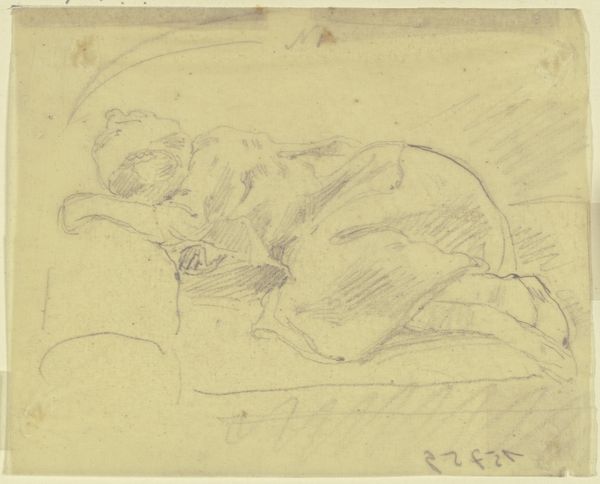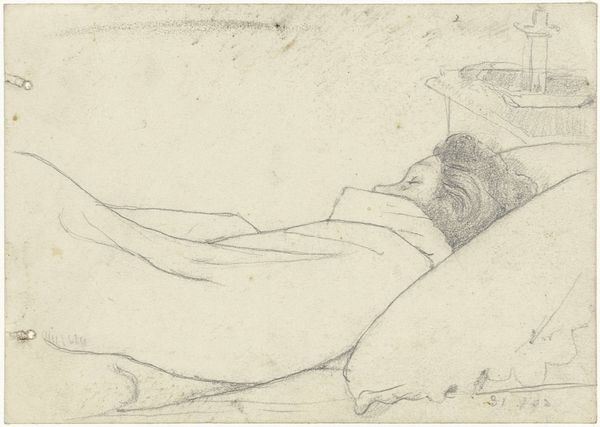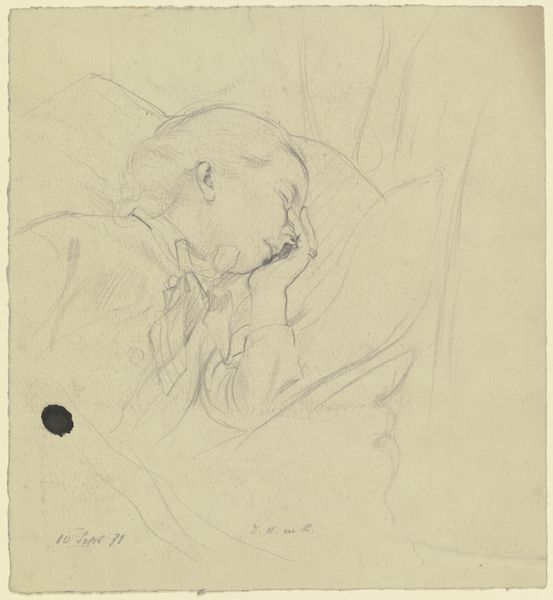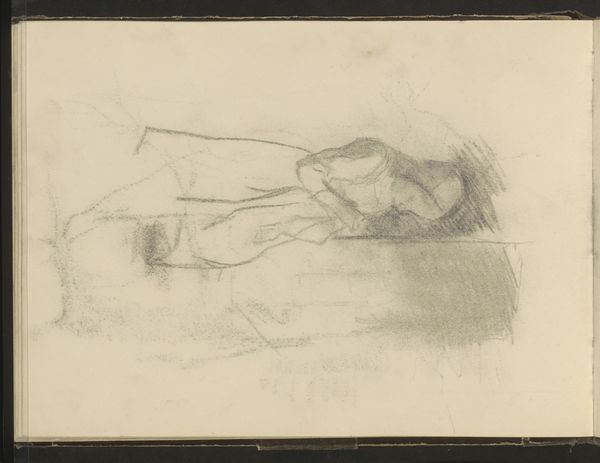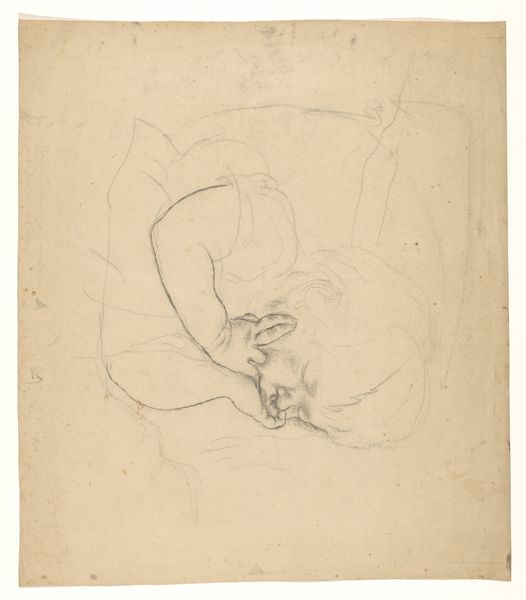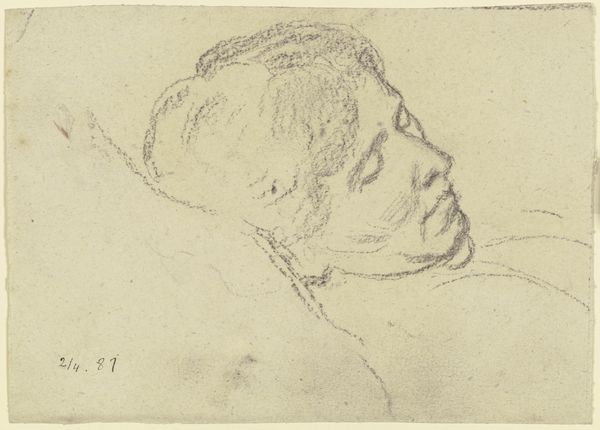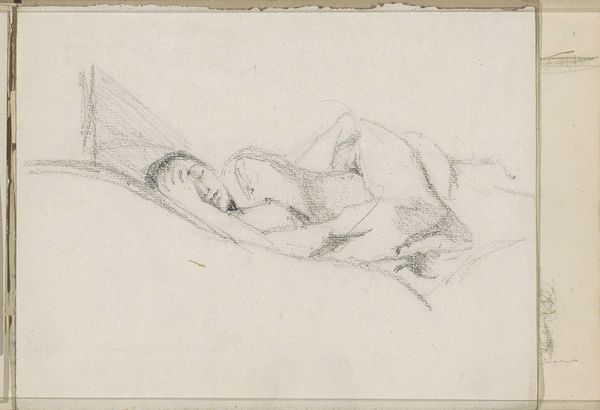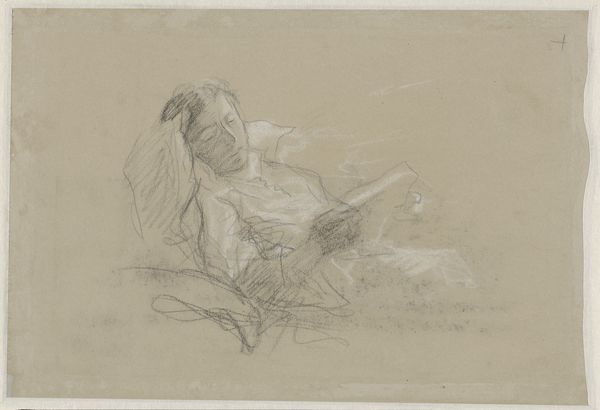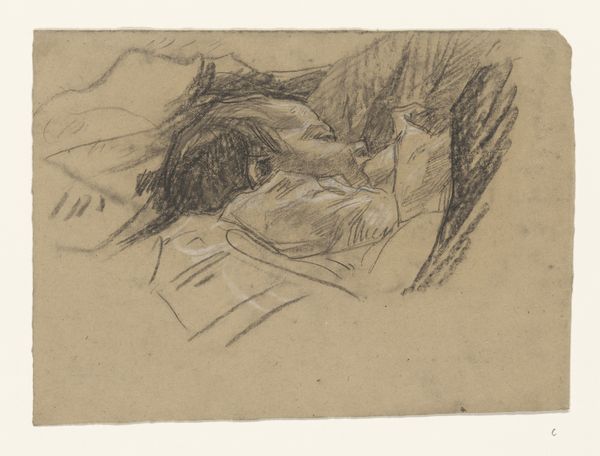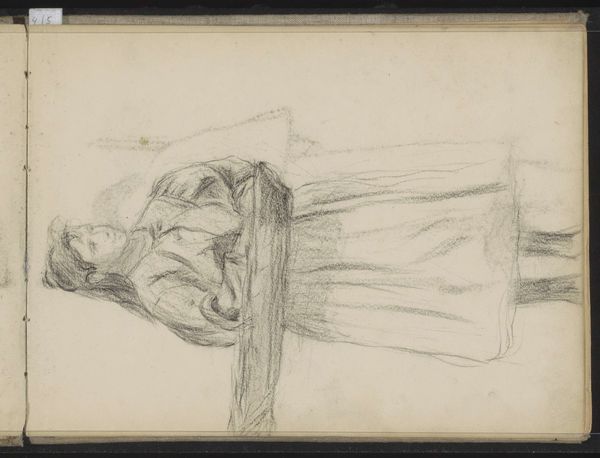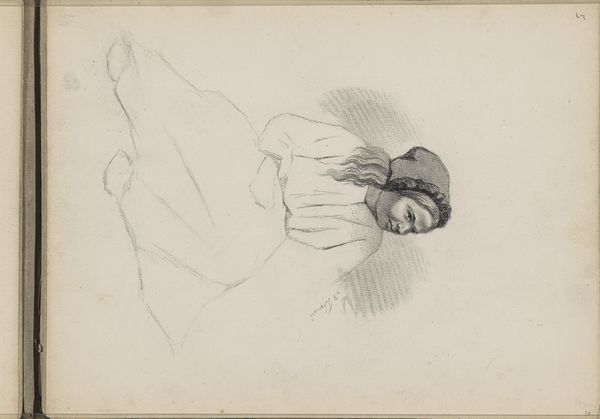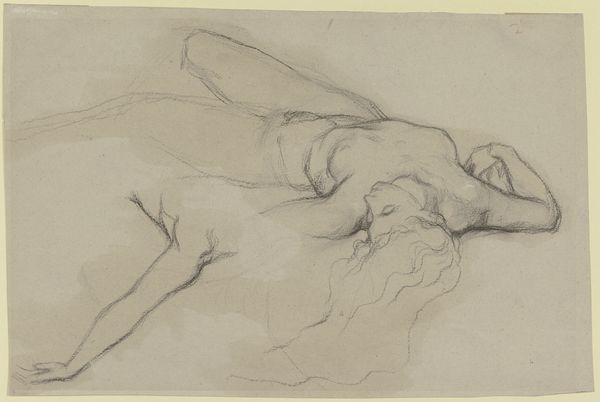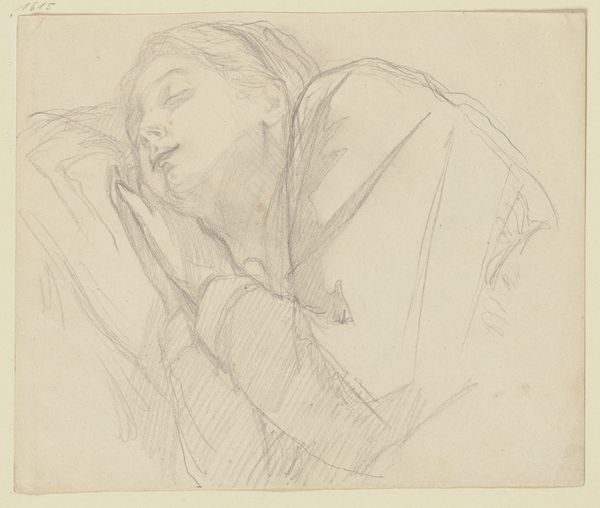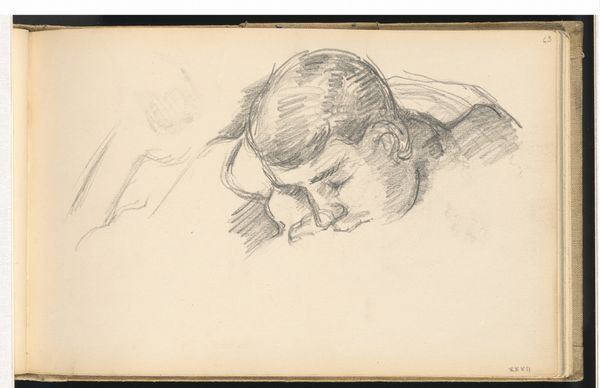
drawing, paper, pencil
#
portrait
#
drawing
#
16_19th-century
#
pencil sketch
#
paper
#
pencil drawing
#
pencil
Copyright: Public Domain
Editor: So, this is "Luise Scholderer sleeping," a pencil drawing on paper from 1889 by Otto Scholderer. There's something so immediate and intimate about a simple pencil sketch. What aspects of this drawing strike you? Curator: What interests me most is how the artist’s hand is so present. You can almost feel the texture of the paper and the varying pressure of the pencil creating form. It highlights the act of seeing and recording. It makes me think about the means of production. How readily available was paper? What quality was the pencil? These factors would all influence the outcome. Editor: That’s a good point. It is such an unassuming image. The availability of materials and the constraints they imposed really shaped the final product. How does this piece fit into a broader understanding of 19th-century portraiture? Curator: Well, formal painted portraits of the era often served to signify status and wealth. But a quick sketch like this feels much more personal. Its value lies not in display or commodity, but in the relationship between the artist and the model, the labor of observation. Was this a study? A loving observation? These types of "informal" studies open a window into the daily lives and material culture of the time, more so than grand paintings ever could. Editor: That makes perfect sense. Thinking about the drawing as an object itself, connected to the economy and society of its time, really reframes how I see it. Curator: Exactly! By focusing on these material conditions, we avoid simply celebrating artistic genius and acknowledge the real-world forces that shape every work of art. Editor: Thanks, I now understand this sketch and the importance of production through a new lens.
Comments
No comments
Be the first to comment and join the conversation on the ultimate creative platform.
